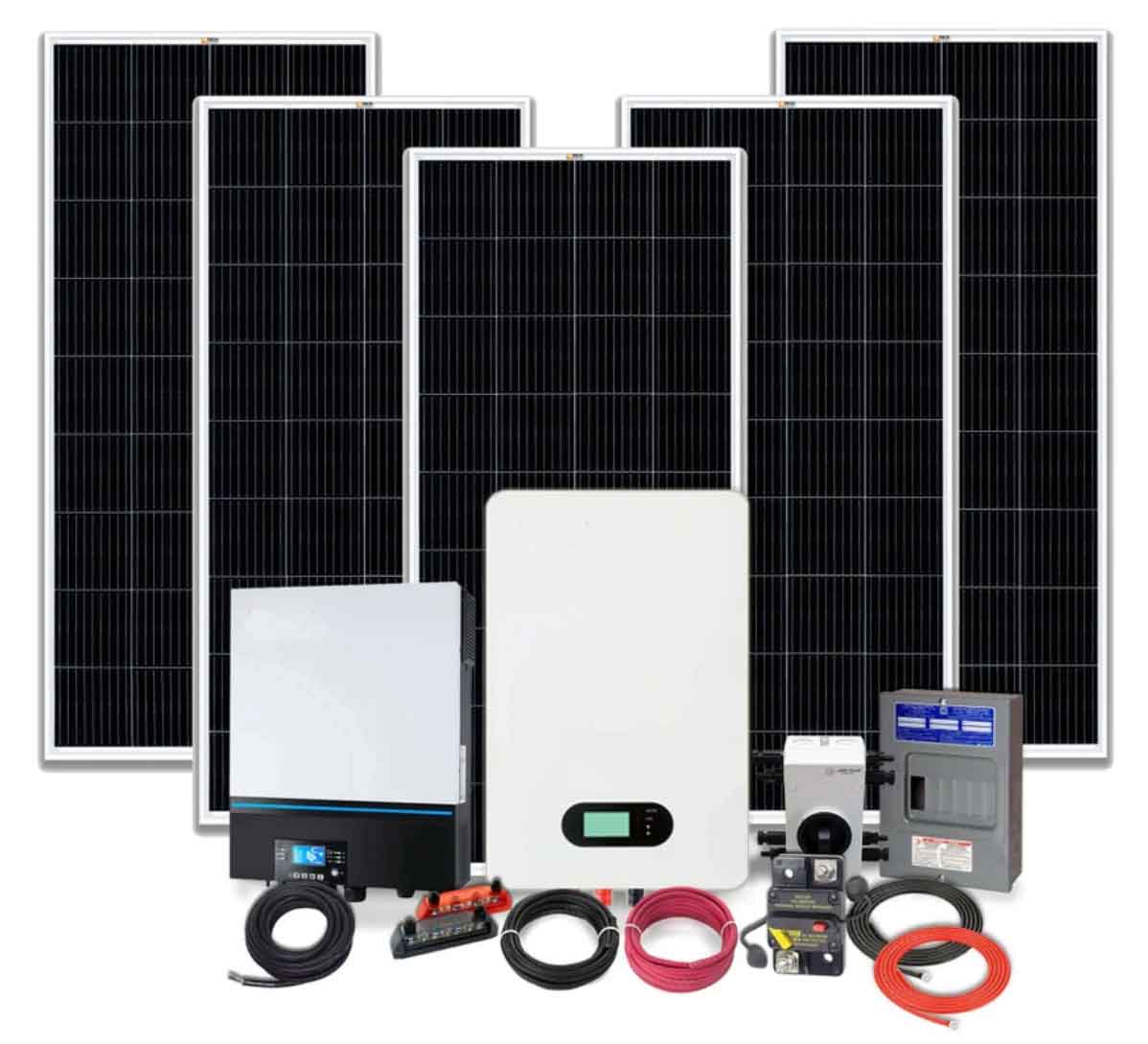Solar kits have revolutionized the way we harness and utilize solar energy, providing sustainable and efficient energy solutions for diverse applications. As technology continues to advance, the future of solar kits holds exciting possibilities. This comprehensive guide explores upcoming innovations in solar kits, examining how these advancements will enhance their efficiency, accessibility, and versatility.

Emerging Technologies in Solar Kits
The integration of cutting-edge technologies into solar kits promises to significantly enhance their performance and functionality. These innovations are set to redefine the capabilities of solar kits in the coming years.
Advanced Solar Panel Materials
- Perovskite Solar Cells
- Higher Efficiency: Perovskite solar cells offer higher efficiency rates than traditional silicon-based panels.
- Cost-Effective Production: Easier and cheaper to manufacture.
- Flexibility: Lightweight and flexible, suitable for various applications.
- Bifacial Solar Panels
- Dual-Sided Energy Capture: Capture sunlight on both sides of the panel, increasing energy output.
- Albedo Effect Utilization: Utilize reflected light from the ground and surrounding surfaces.
- Organic Photovoltaics (OPVs)
- Lightweight and Flexible: Made from organic materials, allowing for lightweight and flexible panels.
- Low Production Cost: Cheaper to produce compared to traditional panels.
- Sustainability: Environmentally friendly with the potential for biodegradable materials.
Integration with Smart Technology
- Internet of Things (IoT) Connectivity
- Real-Time Monitoring: IoT-enabled solar kits provide real-time data on energy production and consumption.
- Remote Management: Control and optimize solar kit performance remotely using smartphones or computers.
- Artificial Intelligence (AI) and Machine Learning (ML)
- Predictive Maintenance: AI algorithms predict maintenance needs and potential system failures.
- Optimized Energy Management: ML models optimize energy storage and usage patterns based on consumption data.
- Blockchain Technology
- Peer-to-Peer Energy Trading: Enable decentralized energy trading between households and communities.
- Transparent Energy Transactions: Ensure secure and transparent energy transactions.
Enhanced Energy Storage Solutions
- Next-Generation Batteries
- Solid-State Batteries: Higher energy density and improved safety compared to traditional lithium-ion batteries.
- Flow Batteries: Scalable storage solutions with long cycle life and high efficiency.
- Hybrid Energy Storage Systems
- Integrated Solar and Storage: Combining solar panels with advanced battery storage for seamless energy management.
- Multi-Source Energy Storage: Integration with other renewable energy sources like wind or hydro for enhanced reliability.
- Energy Management Systems (EMS)
- Smart Energy Distribution: EMS optimize the distribution of stored energy to different devices and systems.
- Demand Response Capabilities: Adjust energy consumption based on real-time demand and grid conditions.
Innovations in Solar Kit Design and Installation
- Plug-and-Play Solar Kits
- Ease of Installation: Simplified installation process, suitable for DIY enthusiasts.
- Modular Design: Expandable and customizable to meet varying energy needs.
- Building-Integrated Photovoltaics (BIPV)
- Aesthetic Integration: Solar panels integrated into building materials like roofs, windows, and facades.
- Space Efficiency: Maximize energy generation without requiring additional space.
- Portable and Foldable Solar Kits
- Mobility: Lightweight and foldable designs for easy transport and setup.
- Versatility: Ideal for camping, disaster relief, and temporary installations.
Future Trends and Predictions
The future of solar kits is shaped by several key trends and predictions, reflecting the evolving needs and technological advancements in the renewable energy sector.
Increased Adoption in Urban Areas
- Urban Solar Farms: Development of urban solar farms on rooftops and vacant lots.
- Community Solar Projects: Shared solar installations providing energy to multiple households.
Integration with Electric Vehicles (EVs)
- Solar-Powered EV Charging Stations: Solar kits powering EV charging infrastructure.
- Vehicle-Integrated Solar Panels: Solar panels integrated into EVs to extend driving range.
Growth in Off-Grid Applications
- Remote and Rural Electrification: Expanding solar kit usage in remote and rural areas without grid access.
- Emergency and Disaster Preparedness: Enhanced adoption of solar kits for emergency power supply.
Government Policies and Incentives
- Supportive Regulations: Implementation of policies encouraging solar kit adoption and innovation.
- Financial Incentives: Subsidies, tax credits, and rebates for solar kit installations.
Comparative Table of Future Solar Kit Innovations
| Innovation Type | Key Features | Potential Impact |
|---|---|---|
| Advanced Solar Panel Materials | Higher efficiency, cost-effective, flexible | Increased energy output, broader applications |
| IoT Connectivity | Real-time monitoring, remote management | Improved system performance and user convenience |
| AI and Machine Learning | Predictive maintenance, optimized energy management | Enhanced reliability and efficiency |
| Blockchain Technology | Peer-to-peer energy trading, transparent transactions | Decentralized energy markets |
| Next-Generation Batteries | Higher energy density, improved safety | Better energy storage solutions |
| Hybrid Energy Storage Systems | Integrated solar and storage, multi-source storage | Comprehensive energy management |
| Plug-and-Play Solar Kits | Easy installation, modular design | Wider adoption, user-friendly |
| Building-Integrated Photovoltaics | Aesthetic integration, space efficiency | Seamless integration into buildings |
| Portable and Foldable Solar Kits | Mobility, versatility | Expanded use in varied applications |
Conclusion
The future of solar kits is bright, with numerous innovations poised to enhance their efficiency, accessibility, and versatility. Advances in solar panel materials, smart technology integration, and energy storage solutions will drive the next generation of solar kits, making them more effective and user-friendly. These innovations will expand the applications of solar kits, from urban environments and electric vehicle integration to off-grid and emergency situations.
As these technologies continue to evolve, the adoption of solar kits will play a crucial role in the global transition to renewable energy. By staying informed about the latest advancements and trends, homeowners and businesses can leverage the full potential of solar kits, contributing to a sustainable and resilient energy future.
